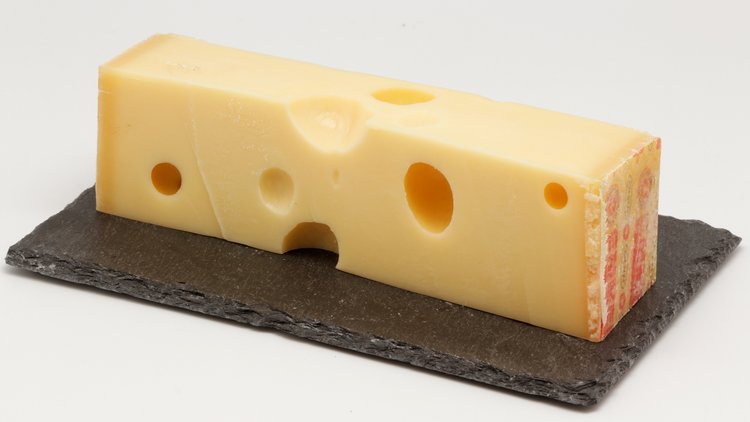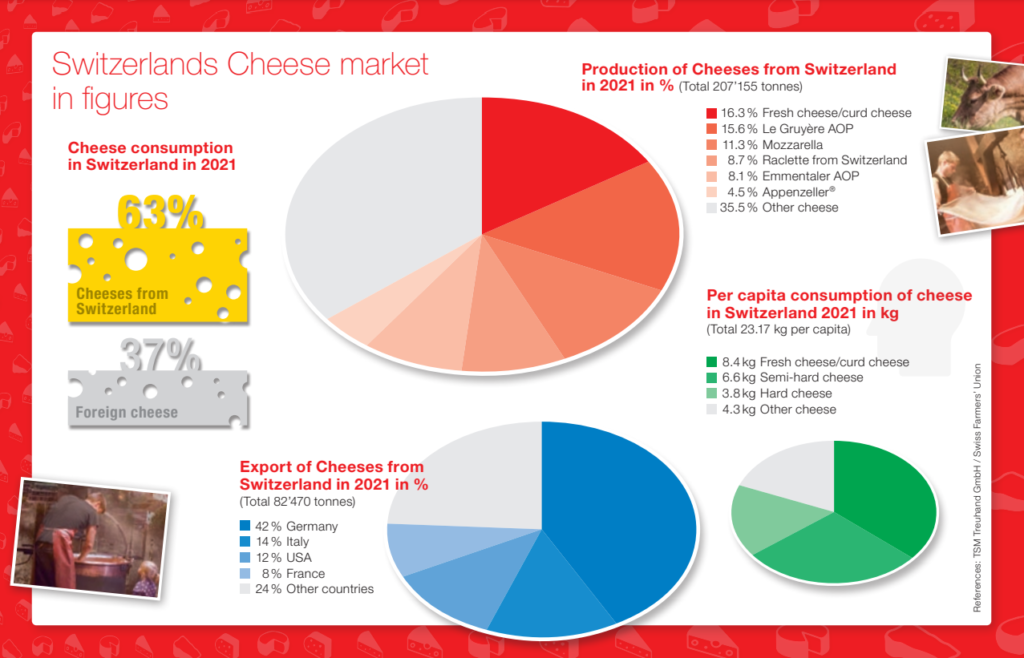
Every year on January 2, Swiss Cheese Day is celebrated, and we couldn’t be happier about it. Many people around the world have fallen in love with this cherished holey, odorous cheese. A yellow, medium-hard cheese called Swiss comes from the Emmental region of Switzerland. Do not assume that all Swiss cheeses are holey. Since Swiss cheese’s holes are known as its “eyes,” varieties without them are known as “blind Swiss Cheese.”
When most expats hear the term “Swiss cheese,” they picture large, pale yellow slabs of bland cheese with plenty of holes decorating their ham sandwiches. Unfortunately, these mass-produced deli selections are appalling imitations of Switzerland’s outstanding dairy culture.

Since the introduction of dairy farming to the region in 2500 BC, cheesemaking in Switzerland has been documented. Since the introduction of rennet in the 15th century, Swiss cheesemaking has progressed from cottage cheese-like techniques to the production of many of the hard cheeses for which Switzerland is known today.
Swiss cheese is categorised into different types of cheese: we differentiate between extra-hard cheese, hard cheese, semi-hard cheese, soft cheese, cream cheese, as well as cheese spread and melted cheese. Each type of cheese has its own characteristics and differs in terms of its fat and water content, as well as the production methods, maturation and storage.
As diverse as the regions in Switzerland! From mild and creamy to strong and bold flavours – there is something to suit every palate, naturally lactose-free and suitable for
vegetarians The variety of cheeses from Switzerland leaves nothing to be desired.

Switzerland Cheese market in figures:



Three frequently asked questions about Swiss cheese:
Where does cheese get its flavour from?
There are over 700 different cheese specialities in Switzerland and their flavour and
aromas are as diverse as those found in a colourful floral meadow. It is the flavour
components in the milk that produce the basic flavour. Microorganisms (e.g. bacteria, mould, yeast) then change and develop this flavour. The flavour is intensified by
increasing the fat content and adding salt, and by leaving the cheese to mature for
longer. The typical tangy flavour of Appenzeller®, for example, is the result of special
care in secret during the ripening process.
How do the holes form in the cheese?
In the case of Emmentaler AOP, the holes are caused by propionic acid bacteria.
First of all, lactic acid bacteria ferment the milk sugar into lactic acid (amongst other
things), as is the case in other cheeses too. The propionic acid bacteria typical of
Emmentaler AOP then ferment the newly formed lactic acid into propionic acid,
acetic acid and carbon dioxide (CO2), which in turn forms the holes.
What does raw milk cheese mean?
Cheese was originally produced using raw milk. Even today, the milk used to make
raw milk cheese, such as Gruyère AOP and other cheese specialities, is turned into
cheese without being heated first. As such, the enzymes in the milk and the bacteria
from the natural environment remain active. This is noticeable as the cheese matures,
as they produce aromas, which are not present in pasteurised cheese. The flavour
of raw milk cheese gets stronger as it ages.
What we have to say about swiss cheese is that it’s for everyone, not just the fanatics! It can be a good, delicious snack anytime of the day, and you’ll enjoy it for as long as it takes for you to reach your satisfaction. So remember these tips when you’re eating your next slice of swiss cheese and enjoy every mouthful!
Source: Switzerland Tourism

